The Annapurna Circuit has long been one of Nepal’s “Classic Treks.” In other words, it’s crowded with tourists, is not very authentic in terms of village life, has been sold out to western trekkers interests, and is logistically easy, including a new road that has caused many trekkers to simply stop walking after about half of the journey. Not exactly the recipe for a wilderness experience I usually seek out.
But while it may lack some authentic charm and wilderness qualities, the Annapurnas still rank as some of the prettiest mountains in the world. That won’t be changed any time soon. What’s more, the place is jam packed with history both from a cultural stand point, and also the story of men and high mountains. So while I knew there would be plenty of compromises to make, I also knew this was a vacation for me, and a proper trekking vacation it turned out to be. I just wanted to see some mountains, anything else was a bonus!
From Besi Sahar, the trek climbs through the hot and humid middle hills at modest elevations, following the glacially fed Marsyangdi river, tracing the huge 50 km long Annapurna Massif, that contains the 10th largest mountain in the world, Annapurna I, as well as dozens of other smaller, but equally majestic peaks, including fleeting views of Manaslu and Himalchuli, to the east. (8156 meters, 8th highest peak in the world.)
As it rounds north and begins to head west towards Manang, the valley becomes more arid, more Tibetan, more Buddhist, and more majestic. Annapurna II and IV dominate the skyline for miles, eventually leading to huge views of Gangapurna, the unbelievable Gangapurna Icefall, and the daunting Great Barrier (of Maurice Herzog fame). The elevation climbs steadily above 3500 meters, and acclimatization becomes crucial, prior to crossing Thorung La, the high point of the trek at 5416 meters (17,700+ feet).
We crossed Thorung La in the midst of an impressive early snowfall that limited visibility, but painted the pass in an untouched beauty. Sharp winds and freezing temperatures got us off the pass quickly, across the Tibetan Plateau, and into the blue skies and arid valleys of Muktinath and Kagbeni.
From here, it’s a few days walk through apple orchards, winding through tibetan villages, across braided rivers, and through dust choked headwinds that wrecked havoc on my respiratory system. But more big mountains quickly come into view, and Dhaulagiri (8167 meters, 7th highest peak) becomes the dominant fixture on the horizon for the next 6 days or so.
Eventually, the roads and trails lead back into the heat of the middle hills, and the big climb up to Ghorepani and Poon Hill, where there are impressive views of Annapurna and Dhaulagiri. From here, I cut across to the Sanctuary, and eventually past the extremely beautiful peak of Machapuchare, and into the heart of the Annapurnas, known as ABC, Annapurna Base Camp. Huge views of a 4000 meter wall of ice and rock block the northern wall of the sanctuary, and are the site of one of the most famous climbs of an 8000 meter peak, led by Chris Bonington in 1970. It’s f___ing huge.
I deided to stay a couple days in the sanctuary, and hopefully catch some sunrises and sunsets. On the morning I was set to walk out, I awoke to another snowstorm, that left about a centimeter of snow on the ground, and obscured the peaks. I figured that was a worthy end to the first month in Nepal, and began the walk back to civilization.
Two days later, I made it back to the road, and after an hour or so of trying to catch some local transportation, we nearly gave up on the buses and were keen on hiring a more expensive taxi. But then, a guy motioned to the roof of a passing bus, and implied there was room. Without much in the way of discussion, we forked over the dollar for the fare, climbed on top, and enjoyed 2 hours of the finest bus ride I’ve ever had, back to the lovely town of Pokhara, where I was quick to find some pizza and a beer.
Amazing trip!
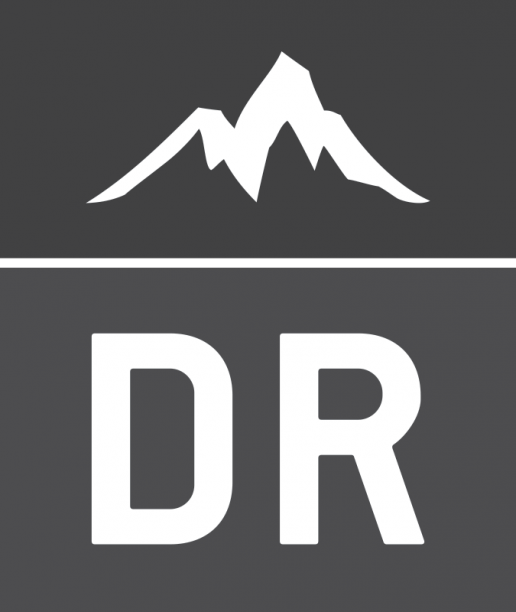
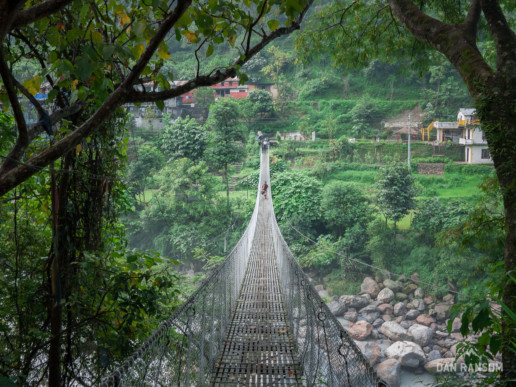
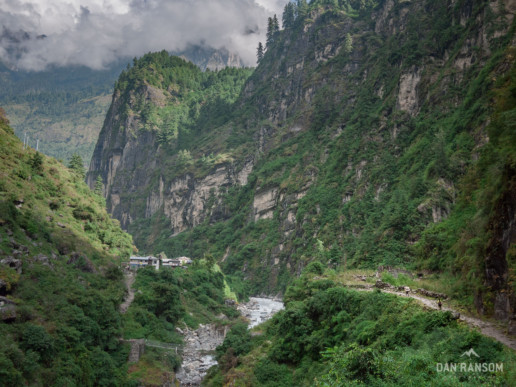
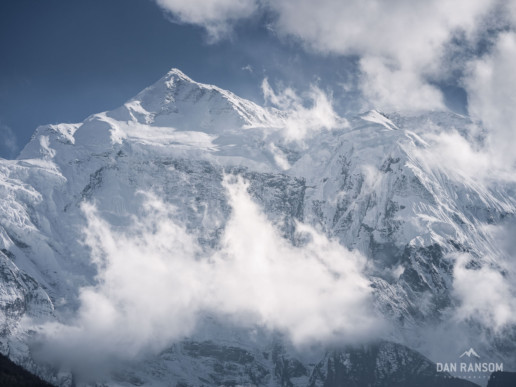
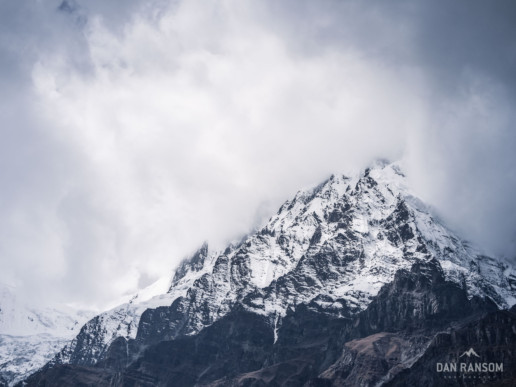
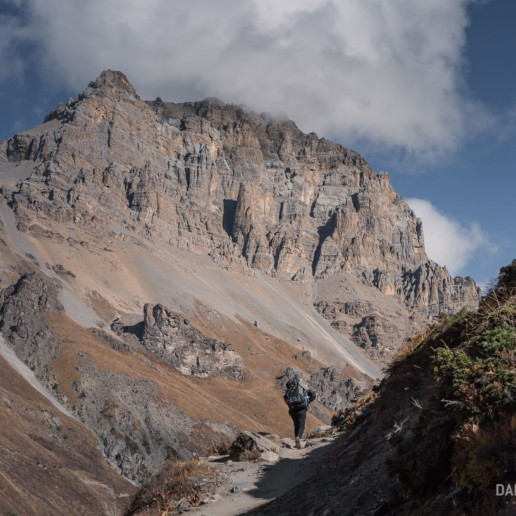

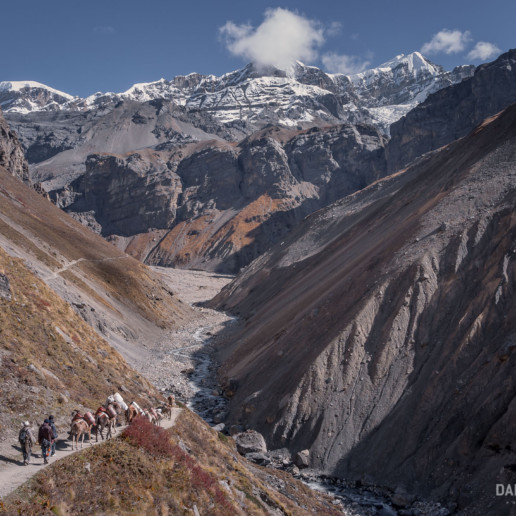
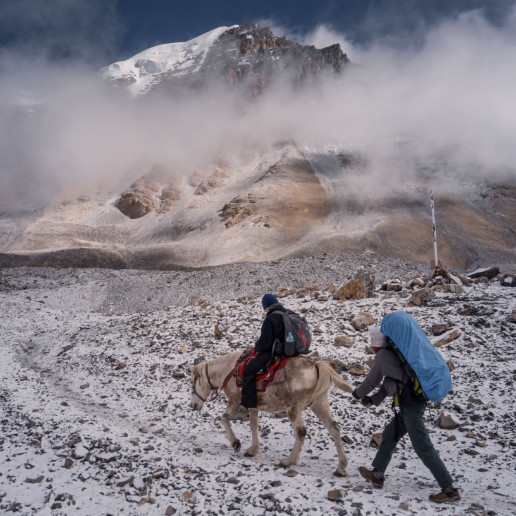

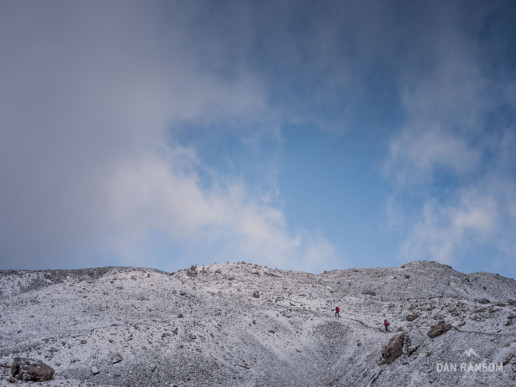
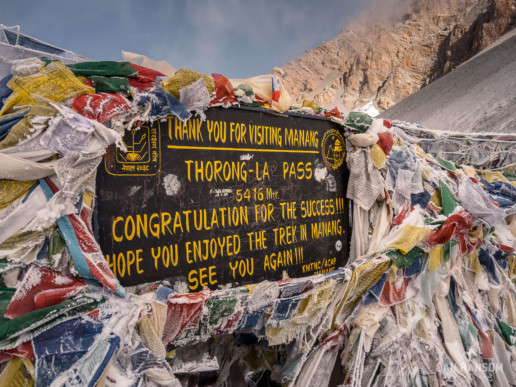
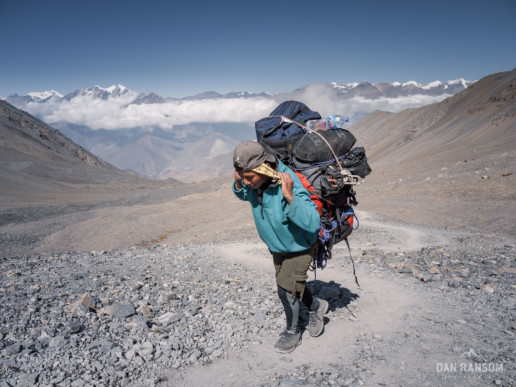
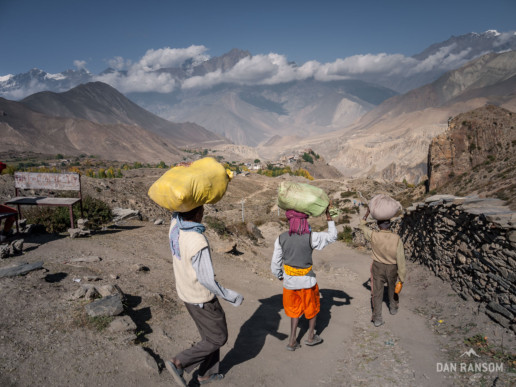
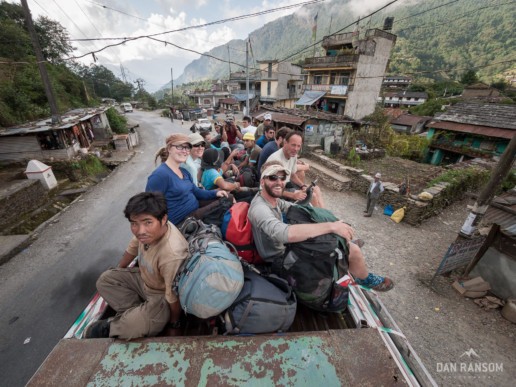
Thank you for sharing, Dan! I got to trek in the Everest area about 10 years ago – amazing. Your pictures are so beautiful! -Abby Snow
Awesome Dan! Beautiful shots and what a great experience. Peace.
Bill
Breezy,
This is awesome! Amazing pictures too.
Sorry to hear the PCT became non-enjoyable for you. I didn’t make it all the way either in time for my school—I got to Fish Lake Resort in Central Oregon and went home.
This trip to The Annapurnas, it looks just awesome! My kind of backpacking too: three weeks sounds about the max of the “about right” range for what I’d want to do nowadays, (for now at least); the scenery is crazy amazing too; plus it probably would’ve cost about the same as the PCT… but I digress. More, smaller trips seems like the way for me from now on. I’d love to head to Utah for some—if I ever do, I’ll let you know.
Anyway, keep up the awesome photo website. I’ve bookmarked it and all. You are one of my favourite photographers.
And have fun out there!
-Scott “Chipper” Clayton
Incredible shots. I can only imagine what it must have felt like to be there.
Wow, fantastic photos. Seriously. I’m blown away.